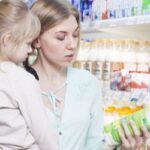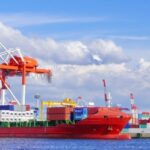
Recently, sustainability has been the motive behind some new movements and legislations. Sustainability in the food industry includes various different aspects, and in this newsletter, we will explore two prevalent food labeling regulations trends that focus on food waste and plastic circular practices of foreign countries, particularly the EU and Korea. We would like to help our readers to stay informed about the latest regulations and any incoming updates.
The two countries that have already implemented mandatory eco-labelling in the EU are France and Italy. The EU has revised the new proposal to put an end to wasteful packaging, including a ban on unnecessary packaging and overpackaging while promoting reusable materials. Here are some highlights:
- Notably, Article 5 and 6 of the Proposal are dedicated exclusively to the sustainability and recycling aspects.
- Article 6 states that all packaging materials shall be recyclable.
- Article 46, at least 65% by weight of packaging waste should be recycled by 2025.
- Article 8, 4 packaging formats (tea and coffee bags, tea and coffee single-serve systems, fruit and vegetable sticky labels and very lightweight plastic carrier bags) must be compostable so that this packaging can go together with the product into the bio-waste stream.
- Article 9 highlights the minimisation of plastic packaging, which is not necessary for any function or performance listed in Annex IV of the same proposal, empty spaces, and certain restrictions on packaging formats → This is pretty relevant to a lot of products imported from Japan as Japanese products are commonly found to have multi-packing within one outer package. Therefore, it is beneficial to keep in mind these requirements.
- Article 11, the recycle content, composition and mandatory sorting instructions for consumers must be labeled on the package.
- Article 12, all waste receptacles for collection of packaging waste would also have to be labeled by 1 January 2028, to enable the separate collection of each material-specific parts of packaging waste.
- After the entry into force of this regulation, all packaging will be subject to show the composition of the packaging materials and must display a label indicating its reusability, as well as a digital QR code or data carrier providing additional information on reusability.
Similarly, South Korea has also been quite active in this movement as well. South Korea passed the Act of Promotion of Saving and Recycling of Resources, in which PVC is banned and PET packaging should be colorless, detachable and labels easy to remove. The labels should show information on the type of packaging and materials so that it can be easy to understand for consumers.
In addition to plastic packaging waste, a similar movement to tackle food waste is underway in South Korea. The new legislation came into force, replacing ”best before” date with a ”use-by” date on a front of pack labeling. (Food Labeling Act, 2021; Imported Food Act, 2023). This regulation aims to reduce food waste caused by premature loss of foods while it is still safe to eat. Therefore, food manufacturers must consider their shelf-life mainly for safety purposes.
Reflecting the Japanese regulation, the Japanese recycling system categorizes mandatory identification marks into 5 groups: Plastic, Paper, PET bottles, steel cans and aluminum cans. It is worth noting that the Plastic containers and packaging category is separated from the PET category, and the PET mark is only applied to PET bottles. Similarly, the steel and aluminum marks are only applied to can containers. In Japan, the obligation to identify recyclable marks is separate from the obligation to recycle. While manufacturers are required to label steel and aluminum cans for recycling, they are not obligated to recycle. On the other hand, it is not mandatory to identify “Glass” for recycling; however manufactures have the obligation to recycle glass.
The figures below illustrate the different types of recycle marks. Here are the recycling marks differences in the three regions: Japan (top), Korea (middle), and EU (bottom) (in corresponding orders).



References
[EU]
- Proposal for a REGULATION OF THE EUROPEAN PARLIAMENT AND OF THE COUNCIL on packaging and packaging waste, amending Regulation (EU) 2019/1020 and Directive (EU) 2019/904, and repealing Directive 94/62/EC
- Mandatory Marks and Labels from Labeling/Marking Requirements
[Korea]
- Act On The Promotion Of Saving And Recycling Of Resources
- Food Labeling and Advertising Act
- Imported Food Safety Management Special Act
- The separate discharge labeling system
[Japan]
Share/Like/Follow:
Newsletter Signup
We issue monthly e-newsletters, which provide you with the latest updates on food labeling/regulations in Japan.
If you want to make sure to not miss any issue, please click below.
Related Service
Research Services on Ingredients & Food Labeling -For the Japanese Market-
We verify the conformity of ingredients and additives with the standards for use in Japan based on specifications such as formulation lists. We also verify the conformity of the proposed labeling of ingredient names, nutrients, etc. with the labeling standards based on specifications such as formulation lists.
Born in Vietnam. Currently training in Japan as an internship student from Wageningen University & Research (Netherlands). Specializing in biochemistry and researches for food safety standards in various countries.





